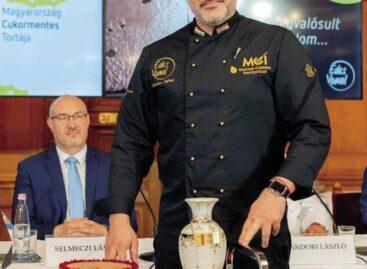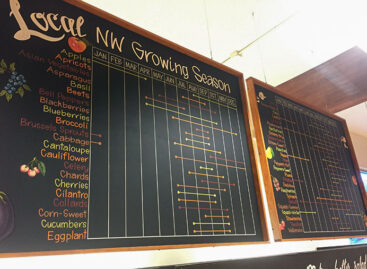Magazine: Synergies and contradictions
At the end of May Századvég Economic Research Zrt. and the National Association of Tourism and Hospitality Employers (VIMOSZ) organised a conference in Budapest, titled ‘The role of Hungary’s food industry in public sector catering.’ In his welcome speech Századvég CEO Péter Márton stressed: the hospitality sector can benefit from the VAT decreasing from 27 percent to 18 percent, as increased turnover can generate thousands of jobs all over Hungary. VIMOSZ president Pál Zoltán Gál told that eve day 2 million people eat in public service catering. The problem is that in Hungary one portion of food is made from EUR 1.3 and from this sum the VAT is 27 percent, while in Western Europe the budget per portion is three times bigger and the VAT is lower. For the Hungarian agriculture the sector represents a HUF 200-billion annual market. Márton Oravecz, the president of the National Food Chain Safety Office (NÉBIH) reckons that the public sector catering market constitutes a constant and stable market for small businesses. NÉBIH’s registry contains 4,600 cooking kitchens and 5,500 serving kitchens. These days most kitchens pick their suppliers based on price only and this inevitably leads to compromises in terms of quality.
Attila Szedlák, head of the presidential cabinet at the Hungarian Chamber of Agriculture (NAK), called attention to the importance of creating a market for small-scale agricultural producers and to the priority of using regional products in public sector catering. In 2017 a HUF 74-billion budget will be available for financing the school and kindergarten meal programme – informed Bence Rétvári, secretary of state in the Ministry of Human Resources. As of 1 January it is the obligation of municipalities to provide those children with daily meals during vacations who need it because of social reasons; this year 221,000 children use this service. Zsolt Párkai, president of FoodService Europe underlined that today public sector catering isn’t simply preparing and serving meals any more, it is a series of services. He told that regionally produced cooking ingredients aren’t only fresher but can also be sourced in a more environmentally friendly fashion. László György, senior economist of Századvég Economic Research Zrt. shares the view that the situation got better in the Hungarian public sector catering between 2010 and 2016. He thinks that the quality of food served doesn’t exclusively depend on money but also on the service provider’s attitude.
NÉBIH’s head of department Anna Zoltai, spoke about the results achieved so far by the quality-driven public sector catering, e.g. among the nearly 1,600 certified partners we find 613 excellent and good kitchens. Bonafarm group director Tamás Éder placed the emphasis on a competition-focused approach. In his view the public sector catering market is undergoing a centralisation process and low prices are taking the sector in the direction of the ‘grey economy.’ He told that domestic agricultural integration can constantly supply the sector with the right amount of ingredients and the products are guaranteed to be safe and fresh. Zsolt Páger, director of Hungast group introduced their supplier certification system, in which partners are checked in several stages so that no below-par product ends up in the kitchens of partners. The programme ended with a roundtable discussion with the participation of Anna Zoltai, Márta Regőciné Fazekas – food sector director of P. Dussmann Kft., István Tresó, managing director of K&H Bank Zrt. and Gábor Regős from Századvég Economic Research Zrt.
Related news
Related news
The age of dreaming
🎧 Hallgasd a cikket: Lejátszás Szünet Folytatás Leállítás Nyelv: Auto…
Read more >(HU) 50 birka kalandja a diszkontáruházban – A nap videója
🎧 Hallgasd a cikket: Lejátszás Szünet Folytatás Leállítás Nyelv: Auto…
Read more >(HU) Útmutató a delikátüzlet zöldségosztályán – A nap képe
🎧 Hallgasd a cikket: Lejátszás Szünet Folytatás Leállítás Nyelv: Auto…
Read more >



